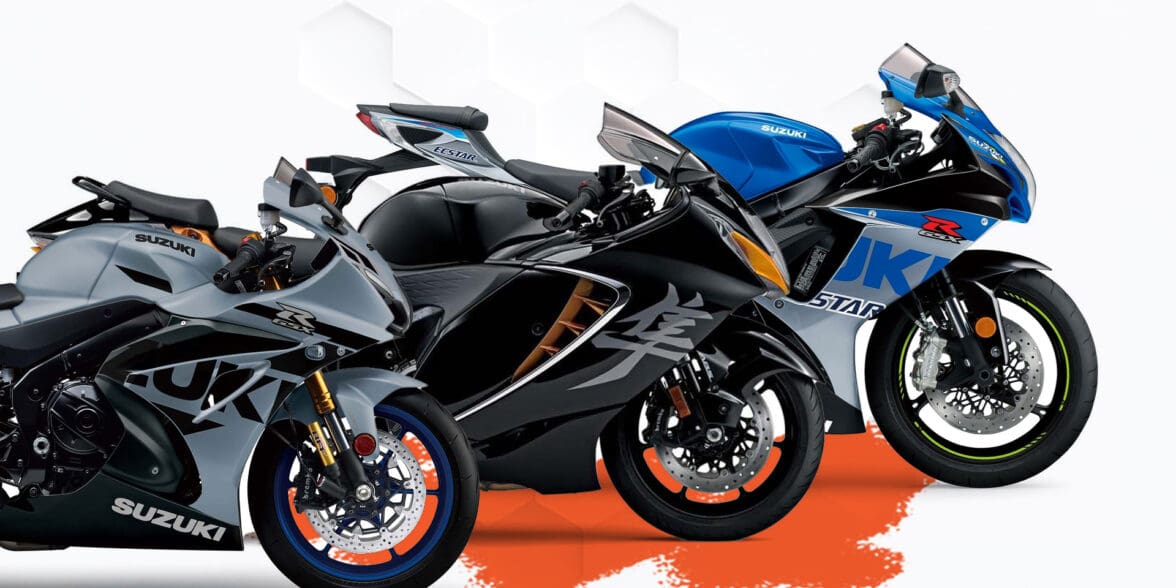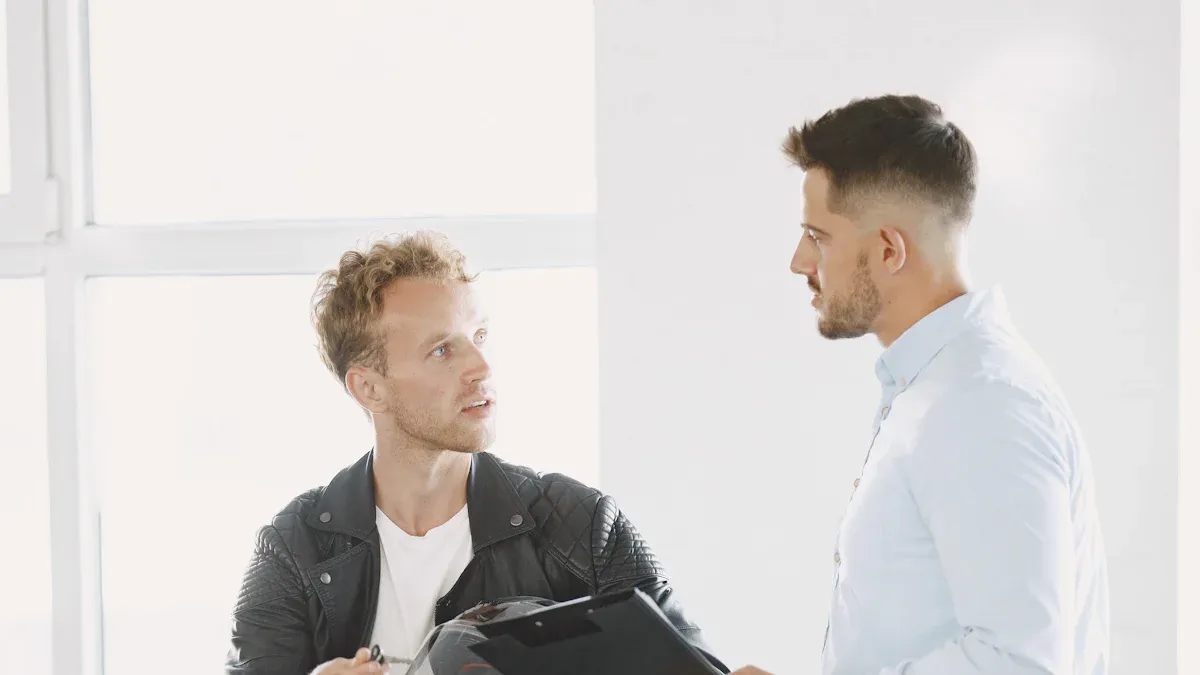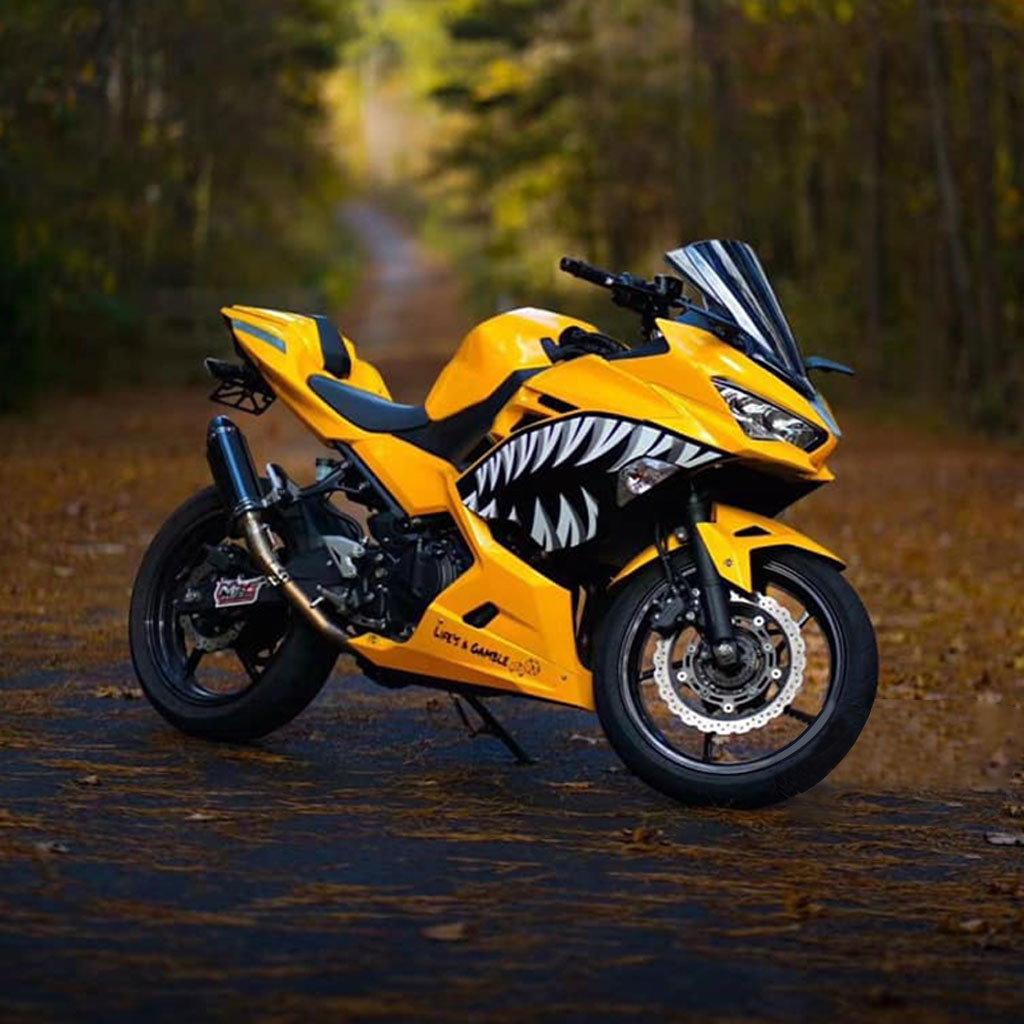How to Choose Your First Motorcycle (Without Regrets)

Buying your first motorcycle is a thrilling milestone, but it’s not a decision to rush. With over 573,000 new motorcycles sold in 2015, the market offers plenty of choices, but not all are right for beginners. Choosing the best beginner bike means thinking about your goals, lifestyle, and skill level. Take your time, and you’ll find the perfect ride that fits you.
Key Takeaways
Think about why you want a motorcycle. Decide if you want to ride for fun, travel to work, or go on adventures. This helps you pick the right bike.
Match the bike to your life and taste. Pick a motorcycle that fits how you ride and what you like. This makes riding more fun.
Begin with an easy-to-handle bike. Choose beginner motorcycles with smaller engines to learn safely and feel confident.
Assessing Your Needs for the Best Beginner Bike
Define Your Riding Goals
Before you start shopping for your first bike, take a moment to think about why you want to ride. Are you dreaming of long road trips across scenic highways? Or maybe you’re looking for a quick and fun way to commute through the city. Your riding goals will shape the type of bike that’s best for you.
If you’re planning to travel long distances, a cruiser might be your best beginner bike. Cruisers are comfortable for extended rides and often have a relaxed seating position. On the other hand, if you’re more interested in zipping through traffic or exploring twisty backroads, a sportbike could be a better fit. For those who want versatility, a dual-sport motorcycle offers the ability to ride both on and off-road.
Tip: Write down your riding goals before heading to a dealership. It’ll help you stay focused and avoid getting overwhelmed by all the options.
Match Your Lifestyle and Preferences
Your lifestyle plays a big role in choosing your first bike. Think about how often you’ll ride and where you’ll go. If you’re only riding occasionally, you might not need a high-performance machine. But if you plan to make riding a daily habit, you’ll want something reliable and easy to maintain.
Consider your preferences too. Do you like the classic look of cruisers, or do you prefer the sleek design of sportbikes? Maybe you’re drawn to the rugged appeal of dual-sport bikes. The best beginner bike is one that matches your personality and makes you excited to ride.
Also, don’t forget practical factors like storage space and fuel efficiency. If you live in a crowded city, a lightweight bike with good maneuverability might be ideal. For rural areas, a dual-sport motorcycle could handle dirt roads and uneven terrain better.
Note: Your first bike doesn’t have to be perfect. It’s okay to start with something simple and upgrade later as you gain experience.
How to Buy a Motorcycle That Matches Your Skill Level
Why Beginners Should Avoid Overpowered Bikes
When you're just starting out, it can be tempting to go for a flashy, high-powered motorcycle. After all, who doesn’t want to feel the thrill of a bike that can roar down the highway? But here’s the thing—overpowered bikes are not your friend when you’re still learning the ropes.
As a beginner, you’re still getting used to the basics of riding, like balancing, braking, and cornering. A powerful bike can make these tasks much harder. For example, a novice rider who had just completed a safety course once found themselves struggling to control a high-performance motorcycle. Without prior experience, they couldn’t handle the bike’s speed and power, which increased their risk of accidents.
Overpowered bikes can also be unforgiving. A small mistake, like twisting the throttle too hard, can send you flying faster than you can react. That’s why it’s better to start with a learner bike that’s designed for beginners. These bikes are easier to control and let you focus on building your skills without feeling overwhelmed.
Tip: Look for an entry-level motorcycle with a smaller engine size, like 300cc to 500cc. It’s plenty of power for a beginner and much safer to handle.
Focus on Manageability and Growth
Your first bike should feel like an extension of yourself. It needs to be manageable, both in terms of size and weight. A bike that’s too heavy or tall can make you feel unsteady, especially when stopping or maneuvering at low speeds. You want something that you can confidently handle, even if you’re just practicing in a parking lot.
Think about your growth as a rider too. A good learner bike will help you develop your skills and prepare you for more advanced motorcycles down the road. It’s not about getting the fanciest bike right away—it’s about finding one that helps you learn and grow.
Note: Don’t worry if your first bike isn’t your dream motorcycle. It’s a stepping stone. Once you’ve gained experience, you can upgrade to something more powerful and suited to your long-term riding goals.
When figuring out how to buy a motorcycle, prioritize comfort and control over speed and style. A bike that matches your skill level will make your learning experience smoother and more enjoyable. Plus, it’ll give you the confidence to tackle new challenges as you become a better rider.
Budgeting for Your First Motorcycle
Add Gear, Insurance, and Maintenance Costs
When setting a budget for your first motorcycle, remember it’s not just about the bike’s price. There are other costs you need to consider to ride safely and keep your bike running well.
Here’s a simple list of common expenses:
Expense Type | Average Cost |
|---|---|
Motorcycle | |
Safety Gear | Up to $1,300 |
Motorcycle License | About $30 |
Motorcycle Insurance | About $700 annually |
Riding Course | About $100 |
Maintenance | $1,000 annually |
Fuel | About $300 annually |
You’ll need safety gear like a helmet, jacket, gloves, and boots. These can cost up to $1,300, but they’re very important. Insurance is another big expense, costing about $700 each year. Maintenance, like oil changes and repairs, can cost around $1,000 yearly. All these costs add up, so plan ahead.
Tip: If you’re paying monthly, expect about $350 for the bike and $50 for insurance.
Prepare for Surprise Costs
Owning a motorcycle can come with unexpected costs. You might need to replace a tire or fix something after a small accident. These surprises can be stressful if you’re not ready.
Save a little money each month for emergencies. Even $20–$50 can help when something unexpected happens. You might also want to buy extras later, like saddlebags or a phone holder.
Note: Planning for these extra costs will help you stay calm when they happen. It’s part of being a smart rider.
By thinking about more than just the bike’s price and planning for other costs, you’ll enjoy riding without financial worries.
Exploring Motorcycle Types for Beginners

Cruiser, Sportbike, and Dual-Sport Options
When you’re trying to narrow down the type of bike that’s right for you, it helps to understand the main options available. Cruisers, sportbikes, and dual-sport motorcycles are some of the most popular choices for beginners. Each has its own style, purpose, and feel.
Cruisers are known for their laid-back vibe and classic design. They’re perfect if you picture yourself cruising down the highway at a relaxed pace. Sportbikes, on the other hand, are built for speed and agility. They’re great if you want a thrilling ride and love the idea of leaning into sharp corners. Dual-sport bikes are the most versatile. They can handle both paved roads and off-road trails, making them ideal if you want to explore a variety of terrains.
Pros and Cons of Each Type
Each of these types of bikes has its strengths and weaknesses. Let’s break it down:
Category | Cruiser | Sportbike | Dual-Sport |
|---|---|---|---|
Price | $15,000 | Varies widely | |
Basic | Advanced | Moderate | |
Top Speed | 100-120 mph | 150-200 mph | 80-100 mph |
Weight | 500-800 lbs | 350-500 lbs | 300-400 lbs |
Cruisers are heavier, which makes them stable but harder to maneuver for beginners. Sportbikes are lighter and faster, but their power can be intimidating. Dual-sport bikes are lightweight and versatile, but they might not be as comfortable for long highway rides.
Think about where and how you’ll ride. The entry-level market offers plenty of options in all three categories, so you’re sure to find something that fits your needs.
Tip: Test ride different types of bikes to see which one feels most comfortable for you.
Test Riding and Finding the Right Fit
Importance of Comfort and Ergonomics
When you test ride a motorcycle, comfort should be your top priority. A bike that feels good during a short ride will make long trips much more enjoyable. Pay attention to the seating position, handlebar reach, and footpeg placement. These small details can make a big difference in how comfortable you feel.
Ergonomics matter too. A poorly designed seat or awkward handlebar position can lead to back pain or wrist strain. In a study with 100 riders, participants rated their discomfort levels during two-hour sessions. Those who used lumbar support reported less pain in their lower and upper back. This shows how proper ergonomic adjustments can improve your riding experience.
Tip: Look for bikes with adjustable features like handlebars and seats. These can help you customize the fit to match your body type.
How to Evaluate Fit During a Test Ride
A test ride isn’t just about how the bike performs—it’s about how it feels. Start by sitting on the bike and checking if your feet touch the ground comfortably. If you’re tiptoeing, the bike might be too tall for you.
During the ride, focus on how the bike handles. Is it easy to steer? Does the weight feel manageable? Pay attention to how your body feels after a few minutes. If you notice discomfort, it’s a sign the bike might not be the right fit.
Note: Don’t rush your test ride. Take your time to explore different speeds and turns. This will help you understand how the bike responds and whether it suits your riding style.
Finding the right fit is all about comfort and control. A bike that feels natural to ride will boost your confidence and make your riding experience more enjoyable.
New vs. Used: Buying Your First Motorcycle
Benefits of Buying Used
Getting a used bike can be a smart first choice. Used bikes cost less, so you save money while still getting a good ride. This is great if your budget is small or you’re unsure about riding long-term.
Another plus is that used bikes don’t lose value as fast. New bikes drop in price quickly, but used ones keep their worth longer. If you sell it later, you might get back more of what you spent. Also, you can find older models with cool features that aren’t made anymore.
Tip: Always check the bike’s maintenance history and take a test ride. This helps make sure the bike is in good shape.
Advantages of Choosing New
A new bike gives you peace of mind. You won’t have to worry about hidden problems or damage from a previous owner. Everything is brand-new, and you’ll likely get a warranty for extra protection.
New motorcycles also have the latest technology and safety upgrades. Features like better brakes and fuel-efficient engines make riding easier and safer. If you enjoy having the newest things, a new bike could be perfect for you.
Note: Choosing between new or used depends on your budget and needs. Decide if saving money or having a brand-new bike matters more to you.
Safety and Gear for Beginner Riders
Buy Good Safety Gear
Safety gear is not just for looks—it keeps you safe. Beginners should get strong, reliable gear to avoid injuries. Start with the basics: a DOT-approved helmet, gloves, jacket, pants, and boots. These protect you from crashes, scrapes, and bad weather.
A helmet is the most important safety item. It shields your head in accidents and can save your life. Gloves help you grip better and protect your hands. Jackets and pants with armor keep your body safe. Boots protect your ankles and help you control the bike.
Tip: Spend money on good gear now to avoid big hospital bills later.
Studies prove this. The Hurt Report showed trained riders have fewer deadly crashes because they wear proper gear. The Motorcycle Safety Foundation (MSF) also teaches the value of gear in its RiderCourses, which focus on safety tips for beginners.
Take a Motorcycle Safety Class
Riding isn’t just about jumping on a bike and going. You need lessons to feel confident and stay safe. A motorcycle safety class is the best way to learn. These classes teach basics like braking, turning, and balancing. They also show how to handle emergencies.
Safety classes teach more than skills—they teach smart thinking. You’ll learn to spot dangers and make safe choices. The MSF Rider Education System uses personal lessons to help new riders feel ready. These classes are tested to make sure they work well.
Note: Some states require a safety class for a motorcycle license. Even if it’s not required, taking one is a great idea.
Using good gear and learning safety skills will make riding safer and more fun.
Choosing your first motorcycle is a thrilling experience, but it’s worth taking your time to make the right choice.
Think about your riding goals, skill level, and budget.
Test ride different bikes to find one that feels just right.
Invest in safety gear to protect yourself and ride confidently.
Remember: The best beginner bike is the one that makes you feel comfortable and excited to ride. 🏍️
FAQ
What’s the best engine size for a beginner motorcycle?
Stick to bikes with engines between 300cc and 500cc. They’re powerful enough for fun but easy to control while you’re learning.
Should I buy a motorcycle online or at a dealership?
Visit a dealership. You can test ride bikes, ask questions, and get expert advice. Online purchases lack the hands-on experience you need.
How do I know if a motorcycle fits me?
Sit on the bike. Your feet should touch the ground comfortably. During a test ride, check if steering and weight feel manageable.
See Also
Selecting The Perfect Pre-Owned Motorcycle For Your Needs
Tips For Ensuring Safety During Your Initial Motorcycle Ride
Essential Care Tips For New Motorcycle Owners

